The Enchanting World of Sea Otters: Guardians of the Kelp Forest
Few marine mammals capture the human heart quite like the sea otter. With their playful antics, endearing faces, and a penchant for floating on their backs, these creatures are more than just charismatic mascots of the ocean. They are vital engineers of coastal ecosystems, boasting a fascinating biology and a compelling history of survival against the odds. This article delves into the captivating life of the sea otter, from their daily routines to their profound ecological impact and the intricate details that make them truly unique.
Meet the Sea Otter: A Marine Marvel
Sea otters, scientifically known as Enhydra lutris, are the smallest marine mammals in North America and the heaviest members of the weasel family (Mustelidae). Unlike seals or whales, they lack a blubber layer to keep warm. Instead, they rely on an extraordinarily dense coat of fur, the densest of any mammal, with up to a million hairs per square inch. This remarkable fur traps a layer of air against their skin, providing insulation in the frigid waters of the North Pacific.
These captivating creatures typically weigh between 30 to 100 pounds (14 to 45 kg) and can reach lengths of 4 to 5 feet (1.2 to 1.5 meters), including their tail. Their bodies are streamlined for aquatic life, featuring short, blunt snouts, small ears, and large, webbed hind feet that act like flippers. Their front paws are dexterous, almost hand-like, perfect for grooming, handling food, and even using tools.
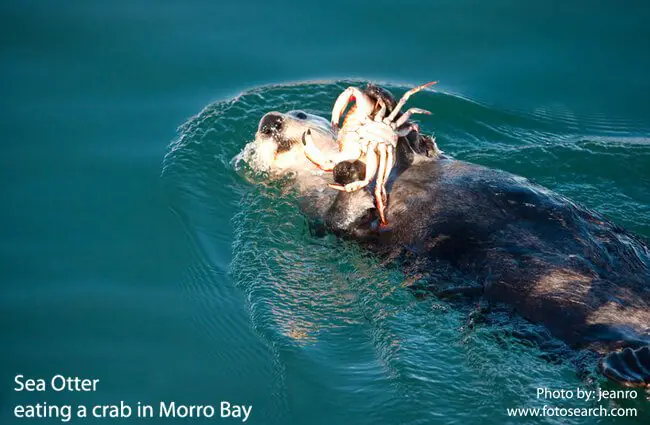
Where to Find These Coastal Charms: Habitat and Range
Sea otters are exclusively found in the shallow coastal waters of the North Pacific Ocean. Their historical range once stretched across the entire North Pacific rim, from northern Japan, through the Kuril Islands, Kamchatka Peninsula, Aleutian Islands, Alaska, and down the coast of North America to Baja California. Today, their populations are fragmented, primarily found in Alaska, British Columbia, Washington, and California (where they are known as Southern Sea Otters).
These marine mammals prefer environments with abundant food sources and protection from strong ocean currents and predators. Ideal habitats include:
- Kelp Forests: These underwater forests provide shelter, foraging grounds, and a place to anchor themselves while resting.
- Rocky Shores: Areas with rocky bottoms offer a rich diversity of invertebrate prey.
- Estuaries and Bays: Protected, shallower waters can serve as nurseries for pups and safe havens.
For an animal lover hoping to spot a sea otter in the wild, the best approach involves visiting protected coastal areas within their known range. Look for them floating on their backs, often in groups called “rafts,” or diving for food near kelp beds. Binoculars are highly recommended for observing them from a respectful distance. Popular viewing spots include Monterey Bay in California, parts of the Alaskan coastline, and coastal areas of British Columbia.
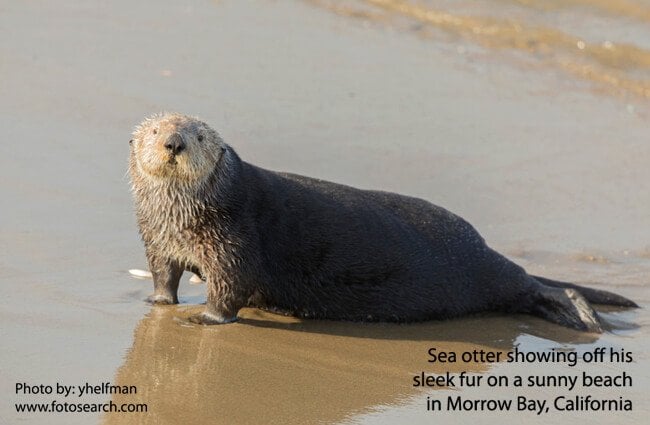
A Gourmet’s Delight: The Sea Otter’s Diet
Sea otters are voracious eaters, consuming up to 25% of their body weight daily to fuel their high metabolism and maintain body temperature. Their diet consists almost entirely of marine invertebrates. They are one of the few mammals known to use tools, often employing rocks to crack open hard-shelled prey while floating on their backs, using their chest as a dining table.
Common items on their menu include:
- Sea urchins
- Clams
- Mussels
- Crabs
- Abalone
- Snails
- Octopuses
- Some slow-moving fish
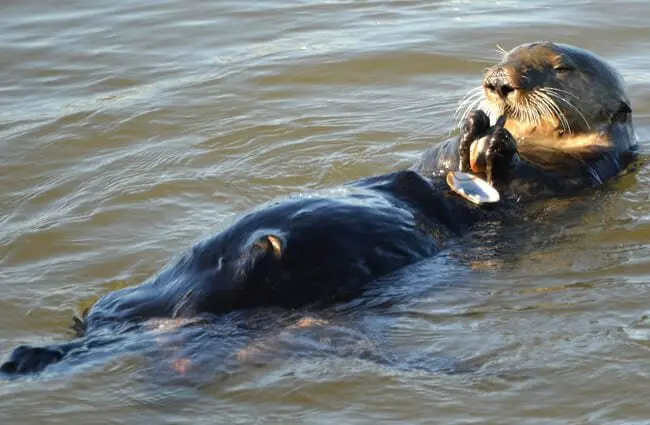
Life in the Water: Behavior and Social Dynamics
Sea otters spend nearly their entire lives in the water, only occasionally hauling out onto land for rest or during severe storms. Their daily routine is largely dictated by foraging and grooming. Grooming is critical for their survival, as it maintains the insulating air layer in their fur. They meticulously clean and fluff their fur, often rolling and somersaulting in the water to work out debris.
While often seen alone, sea otters also gather in social groups known as “rafts.” These rafts can range from a few individuals to hundreds, especially in areas with abundant food. Females often form rafts with their pups, while males tend to form separate bachelor groups. When resting, they often hold hands or wrap themselves in kelp strands to prevent drifting away with the currents.
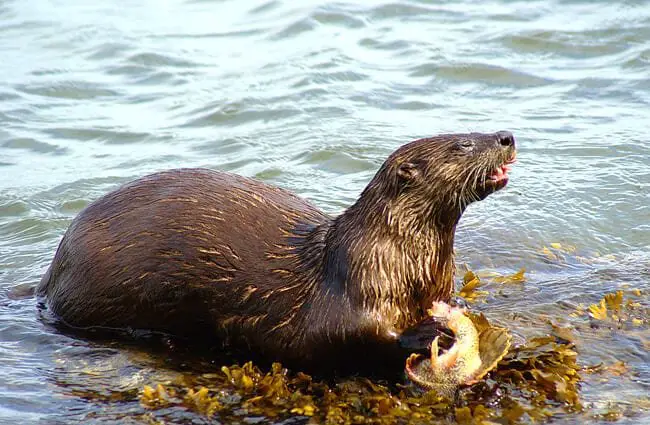
Encountering Sea Otters in the Wild: A Guide for Responsible Observation
For hikers or nature enthusiasts who encounter a sea otter in the wild, responsible behavior is paramount to their safety and well-being. Sea otters are wild animals, and while they may appear docile, approaching them too closely can cause stress, disrupt their foraging, or separate mothers from pups. Here are key guidelines:
- Maintain Distance: Always observe from a significant distance, ideally at least 50 yards (45 meters). Use binoculars or a telephoto lens for closer views.
- Avoid Disturbing Them: Do not attempt to feed, touch, or interact with sea otters. This can habituate them to humans, leading to dangerous situations for both the animals and people.
- Keep Pets Leashed: If you are with a dog, keep it on a leash and away from the water’s edge where otters might be present.
- Report Stranded or Injured Animals: If you find a sea otter that appears injured, sick, or stranded, do not approach it. Contact local wildlife authorities or a marine mammal rescue organization immediately.
- Observe Quietly: Minimize noise and sudden movements to avoid startling the animals.
Diving Deeper: The Science Behind the Sea Otter
Beyond their charming surface, sea otters possess a remarkable suite of adaptations and play a critical role in marine ecosystems. For aspiring zoologists and students, understanding these deeper aspects reveals the true marvel of their biology and ecological significance.
An Evolutionary Journey: From Land to Sea
Sea otters belong to the family Mustelidae, which includes weasels, badgers, and river otters. Their evolutionary journey from a terrestrial ancestor to a fully marine existence is a testament to natural selection. Unlike seals and sea lions, which evolved from dog-like ancestors, sea otters are thought to have diverged from a common ancestor with river otters approximately 5 to 7 million years ago, gradually adapting to life in the ocean. This relatively recent transition means they retain some characteristics of their land-dwelling relatives, such as their dexterous paws, while developing unique marine adaptations.

Physiological Wonders: Surviving the Cold Ocean
The sea otter’s survival in cold ocean waters without blubber is a physiological marvel. Their fur is not just dense; it is meticulously maintained. The outer guard hairs keep the inner layer dry, trapping air for insulation. This air layer is so crucial that if their fur becomes matted or soiled (e.g., by oil), they can quickly succumb to hypothermia. Their high metabolic rate, which is about 2.5 to 3 times higher than that of similarly sized terrestrial mammals, generates the necessary internal heat. This explains their constant need to forage and consume large quantities of food.
Their diving capabilities are also impressive. Sea otters can hold their breath for several minutes, typically 1 to 5 minutes, but sometimes up to 8 minutes, and dive to depths of over 200 feet (60 meters) to find food. They have specialized adaptations for diving, including a high blood volume and the ability to slow their heart rate, conserving oxygen during prolonged underwater excursions.
The Master Forager: Advanced Diet and Tool Use
The sea otter’s diet is not just varied; it is highly specialized and opportunistic. Their strong jaws and molars are adapted for crushing shells, and their sensitive whiskers help them locate prey in murky waters or under rocks. Different populations of sea otters may specialize in different prey items based on local availability, leading to distinct foraging behaviors.
Their use of tools is a particularly advanced behavior. They select appropriately sized rocks or even pieces of metal or glass in some areas, carrying them in a loose pouch under their forearms. When they find a hard-shelled mollusk like an abalone or clam, they bring it to the surface, place the rock on their chest, and repeatedly smash the prey against it until it breaks open. This behavior demonstrates cognitive abilities and problem-solving skills rarely seen in marine mammals.
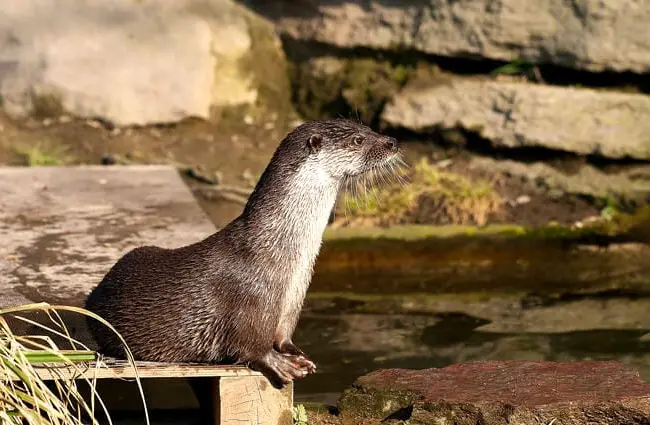
The Cycle of Life: Mating and Reproduction
Sea otters are generally solitary outside of mother-pup pairs and male bachelor groups, but they come together for mating. Breeding can occur year-round, though there may be seasonal peaks depending on the region. Males establish territories and may mate with multiple females. The mating process itself can be quite vigorous and sometimes appears aggressive.
A fascinating aspect of sea otter reproduction is delayed implantation. After mating, the fertilized egg may not immediately implant in the uterine wall. This allows the female to time the birth of her pup to coincide with favorable environmental conditions, such as abundant food or calmer waters. Gestation periods typically range from 4 to 12 months due to this delay.
Females usually give birth to a single pup, weighing only 3 to 5 pounds (1.4 to 2.3 kg), often in the water. The newborn pup is completely helpless and relies entirely on its mother for survival. The mother carries the pup on her belly, constantly grooming its incredibly buoyant fur to keep it afloat and warm. Pups remain dependent on their mothers for 5 to 8 months, learning essential foraging and survival skills during this critical period. The bond between a mother and her pup is exceptionally strong and endearing to observe.

Keystone of the Kelp Forest: Ecosystem Contributions
Sea otters are recognized as a keystone species, meaning their presence has a disproportionately large impact on their ecosystem, far greater than their biomass would suggest. Their most significant contribution is their role in maintaining the health of kelp forests.
Kelp forests are incredibly productive and biodiverse ecosystems, providing food and shelter for countless marine species. However, these forests are vulnerable to overgrazing by sea urchins. Sea urchins feed on the holdfasts of kelp, severing the plants from the seafloor and leading to “urchin barrens” where kelp forests are decimated.
This is where sea otters come in. As primary predators of sea urchins, they keep urchin populations in check. By controlling urchin numbers, sea otters allow kelp forests to thrive. This trophic cascade demonstrates their profound influence: otters eat urchins, kelp forests flourish, and the entire ecosystem benefits from increased biodiversity, fish populations, and carbon sequestration. Without sea otters, many kelp forests would disappear, drastically altering coastal marine environments.
Sea Otters and Humanity: A Complex Relationship
The history of sea otters and humans is a dramatic one. In the 18th and 19th centuries, sea otters were hunted relentlessly for their incredibly valuable fur, leading to their near extinction. By the early 20th century, only a few isolated populations survived, numbering in the hundreds globally.
Thanks to international protection efforts, including the International Fur Seal Treaty of 1911 and later the Marine Mammal Protection Act in the United States, sea otter populations have made a remarkable comeback in many areas. However, they still face significant threats:
- Oil Spills: Their dense fur, which is vital for insulation, is highly susceptible to oil fouling, leading to hypothermia and death.
- Disease: Exposure to land-based pathogens through runoff can cause illness.
- Predation: Great white sharks occasionally prey on sea otters, though they are not a primary food source for sharks.
- Entanglement: Fishing gear can pose a threat.
- Habitat Degradation: Coastal development and pollution impact their foraging grounds.
Despite these challenges, sea otters hold significant cultural value. Indigenous peoples of the North Pacific have long revered them, incorporating them into their art, stories, and spiritual beliefs. Today, they are a symbol of successful conservation and a major draw for ecotourism, contributing to local economies and fostering a greater appreciation for marine wildlife.

Caring for Captive Otters: A Zookeeper’s Perspective
Caring for sea otters in a captive environment, such as a zoo or aquarium, requires specialized knowledge and dedication. Zookeepers play a crucial role in ensuring the well-being of these animals, often contributing to conservation research and public education.
Key tasks and considerations for zookeepers include:
- Dietary Management: Providing a high-quality, varied diet of marine invertebrates and fish, carefully monitored for nutritional balance and quantity to meet their high metabolic demands.
- Environmental Enrichment: Offering a stimulating environment with toys, puzzles, and varied foraging opportunities to encourage natural behaviors and prevent boredom. This might include ice treats, floating objects, or hidden food.
- Water Quality and Temperature: Maintaining pristine, cold saltwater environments is paramount. Filtration systems must be robust, and water temperature carefully regulated to mimic their natural habitat.
- Social Structure: Understanding and managing social dynamics, as otters can be solitary or social depending on individual personalities and gender.
- Veterinary Care: Regular health checks, preventative medicine, and prompt treatment for any illnesses or injuries.
- Grooming Support: While otters groom themselves, zookeepers monitor their fur condition and may assist with cleaning if necessary, especially in rehabilitation scenarios.
Things to avoid in captive care:
- Inadequate Diet: Not meeting their caloric needs or providing an unbalanced diet can lead to health issues.
- Poor Water Quality: Can cause skin infections, eye problems, and overall stress.
- Lack of Enrichment: Leads to boredom, stereotypical behaviors, and reduced welfare.
- Stressors: Loud noises, sudden changes in routine, or improper social groupings can cause significant stress.
- Over-handling: Unless for medical reasons, excessive direct human contact should be avoided to maintain their natural behaviors and reduce stress.
Fascinating Facts About Sea Otters
- Sea otters have specialized pockets of loose skin under each forearm, which they use to store food and their favorite rock tool.
- They can close their nostrils and ears when diving underwater.
- A group of resting sea otters is called a “raft.”
- Sea otter pups are so buoyant they cannot dive underwater for the first few weeks of their lives, relying entirely on their mothers to retrieve food.
- Their scientific name, Enhydra lutris, means “water otter.”
- Sea otters are the only marine mammals that regularly use tools.
- They have a unique way of keeping warm: by constantly eating and having the densest fur of any animal.
- Their playful behavior, such as juggling pebbles, is thought to be a form of practice for foraging skills.
Guardians of the Coast: The Future of Sea Otters
The sea otter’s journey from the brink of extinction to a symbol of marine conservation is a powerful narrative. These intelligent, charismatic, and ecologically vital creatures remind us of the intricate connections within our natural world. As guardians of the kelp forests, their health directly reflects the health of our coastal ecosystems. Continued research, conservation efforts, and responsible human interaction are essential to ensure that the playful splashes and contented faces of sea otters continue to grace the North Pacific for generations to come.

![Red Angus Closeup of a beautiful Red Angus cowPhoto by: U.S. Department of Agriculture [pubic domain]https://creativecommons.org/licenses/by/2.0/](https://animals.net/wp-content/uploads/2020/03/Red-Angus-4-238x178.jpg)




![Red Angus Closeup of a beautiful Red Angus cowPhoto by: U.S. Department of Agriculture [pubic domain]https://creativecommons.org/licenses/by/2.0/](https://animals.net/wp-content/uploads/2020/03/Red-Angus-4-100x75.jpg)

